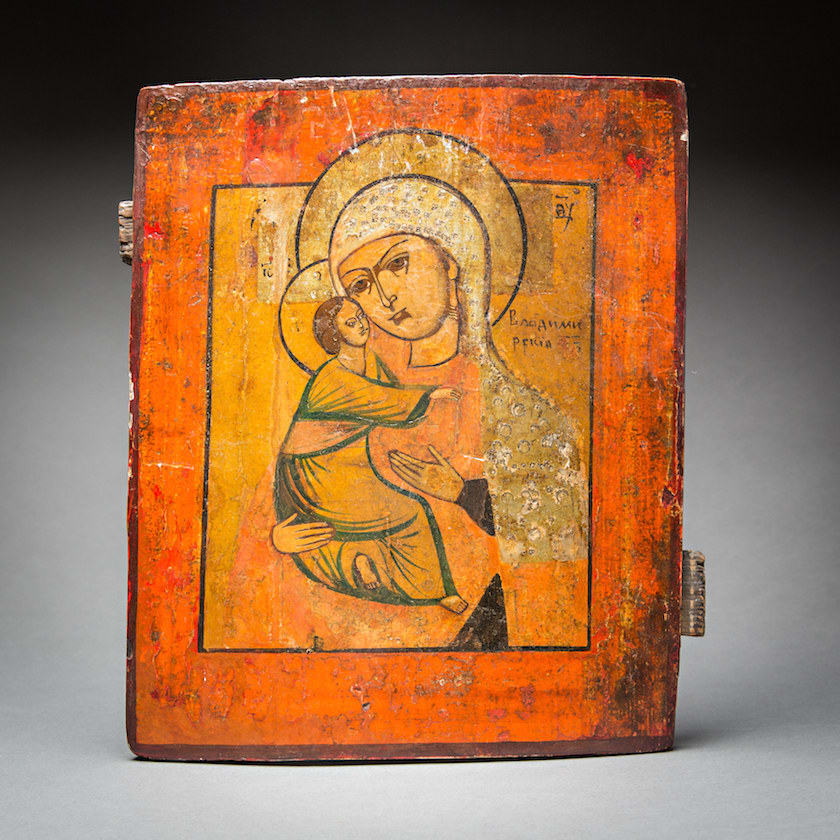The Mother of God of Fedorov, 17th Century CE - 18th Century CE
Tempera on Wood
11
PF.5595
Inseparable from the liturgical tradition, religious art is seen by Orthodox Christians as a form of pictorial confession of faith and a channel of religious experience. Because the icons provide...
Inseparable from the liturgical tradition, religious art is seen by Orthodox Christians as a form of pictorial confession of faith and a channel of religious experience. Because the icons provide a direct personal contact with the holy persons represented on them, these images should be objects of veneration, in either a public or private setting, and were even believed to have the ability to heal.
This is a touching portrait of mother and child. Mary softly holds Jesus by the bottom as he reaches to grasp her orange garment. Mary, however, is given much more prominence just in relation to the size of their heads. The entire composition is imbedded with an extreme harmony of line and form. Mary’s halo and hood both parallel each other. The arc at her the bottom of her neck follows the circle of the halo. The style is derived from Byzantine works, including the elongated, thin nose and the treatment of the infant Christ’s drapery. Most interesting is the decorations around the Virgin’s headdress. The soft golden color has been punctuated by a series of circles and dots; perhaps this is an attempt by the artist to imitate the pattern of lace. The colors of the work are vibrant and luminous. The reddish orange of the border is echoed in the lighter orange of Mary’s robe. Her inner garment is a rich purple that stand out against the orange, as does the green outline of Jesus’ robe. Above all, this is an intimate scene between mother and child. We see our own selves in them.
This is a touching portrait of mother and child. Mary softly holds Jesus by the bottom as he reaches to grasp her orange garment. Mary, however, is given much more prominence just in relation to the size of their heads. The entire composition is imbedded with an extreme harmony of line and form. Mary’s halo and hood both parallel each other. The arc at her the bottom of her neck follows the circle of the halo. The style is derived from Byzantine works, including the elongated, thin nose and the treatment of the infant Christ’s drapery. Most interesting is the decorations around the Virgin’s headdress. The soft golden color has been punctuated by a series of circles and dots; perhaps this is an attempt by the artist to imitate the pattern of lace. The colors of the work are vibrant and luminous. The reddish orange of the border is echoed in the lighter orange of Mary’s robe. Her inner garment is a rich purple that stand out against the orange, as does the green outline of Jesus’ robe. Above all, this is an intimate scene between mother and child. We see our own selves in them.



